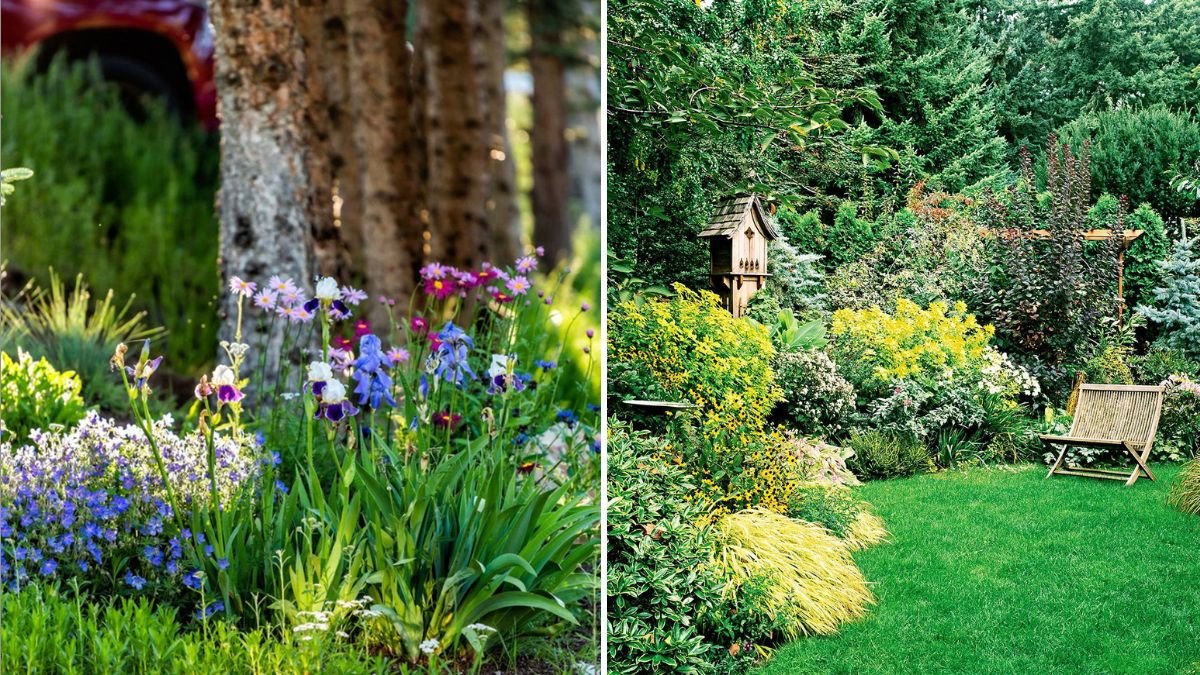A garden that shines year-round is more than a collection of plants—it’s a carefully planned space where color, texture, and structure flow seamlessly through spring, summer, fall, and winter. Too often, gardens are designed for a single peak season, leaving them looking bare or uninspiring during the rest of the year. With thoughtful planning, you can enjoy vibrant blooms in spring, lush greenery in summer, fiery foliage in fall, and interesting textures in winter.
Here’s a detailed guide on how to design a garden that looks stunning through all four seasons.
1. Start with Four-Season Structure
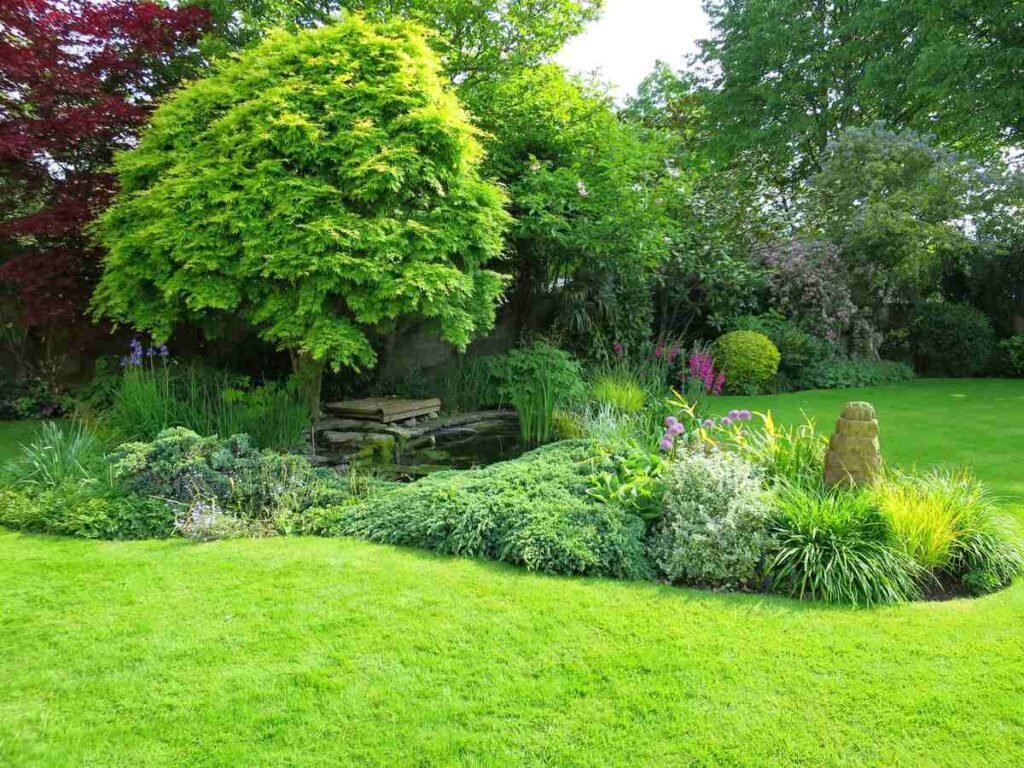
The backbone of any year-round garden is its structure. Evergreen shrubs, trees, hedges, and ornamental grasses provide form and interest even when flowers fade.
- Evergreen anchors: Use boxwood, yew, holly, or junipers to frame pathways, create privacy, or add shape. These plants stay green in winter and serve as a backdrop for seasonal flowers.
- Ornamental trees: Dogwoods, crabapples, or Japanese maples not only flower in spring but also offer colorful foliage or bark in fall and winter.
- Hardscape elements: Pergolas, trellises, benches, or decorative urns add character in plant-dormant months.
A strong framework ensures that even in the quiet of winter, your garden feels alive and intentional.
2. Layer Plantings for Year-Round Appeal
Think of your garden as a stage with multiple layers: tall trees, medium shrubs, perennials, and low-growing ground covers. Layering creates depth, ensures visual interest, and spreads color across all seasons.
- Upper layer (trees): Provides shade in summer and structure in winter.
- Middle layer (shrubs): Offers flowers, berries, and fall foliage. Hydrangeas, viburnums, and witch hazel are excellent choices.
- Lower layer (perennials): Add continuous blooms and textures.
- Ground cover: Creeping thyme, sedum, or vinca keep soil covered and attractive all year.
By mixing layers, you avoid bare spots and maintain a full, lush appearance regardless of season.
3. Choose Plants for Staggered Bloom Times
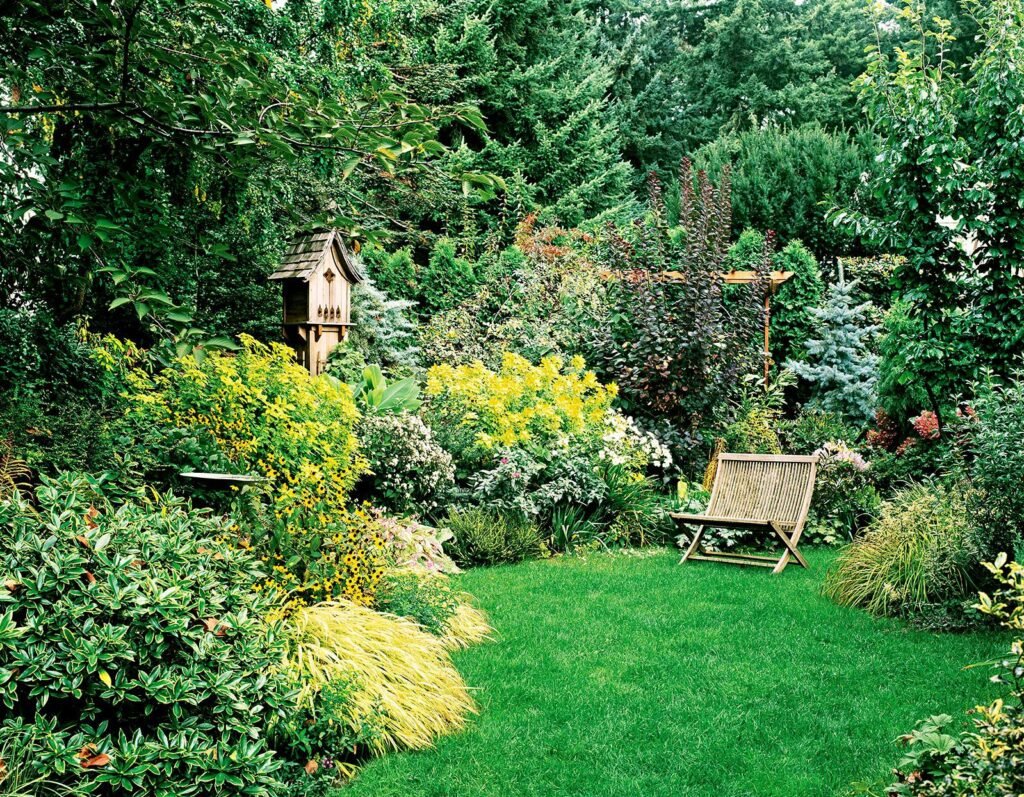
A four-season garden is all about timing. Instead of planting everything that blooms in spring, select plants that bloom at different times of the year.
- Spring stars: Tulips, daffodils, magnolias, and hellebores announce the start of the season.
- Summer standouts: Roses, daylilies, coneflowers, and lavender keep the show going.
- Fall favorites: Asters, sedum ‘Autumn Joy,’ chrysanthemums, and ornamental grasses extend garden beauty.
- Winter wonders: Witch hazel, snowdrops, camellias, and evergreens provide color, fragrance, and form during cold months.
Planting with bloom succession in mind guarantees there’s always something catching the eye.
4. Don’t Forget Foliage and Texture
Flowers may steal the show, but leaves and textures keep a garden interesting between blooms. Mixing plants with varied foliage ensures year-round appeal.
- Colorful foliage: Heucheras (coral bells) come in shades of purple, bronze, and lime green. Japanese forest grass offers golden tones, while variegated hostas brighten shade gardens.
- Interesting bark: Birch trees with white peeling bark or red-twig dogwoods with fiery stems add winter drama.
- Ornamental grasses: Fountain grass, switchgrass, and miscanthus move gracefully in the breeze and look stunning when frosted in winter.
Texture and foliage add depth, making your garden more dynamic throughout the year.
5. Incorporate Seasonal Color Accents
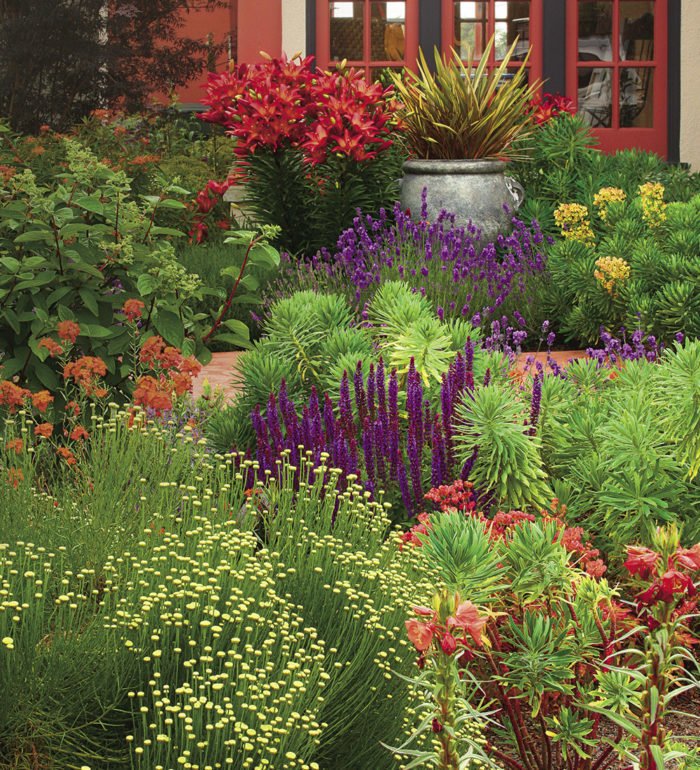
A vibrant garden balances permanent plantings with seasonal highlights. Annuals and container plantings allow you to change the color palette with the seasons.
- Spring: Fill pots with pansies, primroses, and spring bulbs.
- Summer: Add bold geraniums, petunias, and marigolds for vibrant splashes.
- Fall: Mums, ornamental kale, and pumpkins extend seasonal interest.
- Winter: Use evergreen boughs, berries, and decorative pots with twinkle lights.
These accents are easy to swap and provide bursts of color when perennial plantings slow down.
6. Think Beyond Plants: Add Four-Season Features
Great gardens aren’t made of plants alone. Year-round appeal comes from including features that stand out in every season.
- Water features: A pond, fountain, or birdbath attracts wildlife in summer and creates ice sculptures in winter.
- Lighting: Landscape lighting highlights trees, paths, and structures during darker winter days.
- Paths and seating: Stone walkways, benches, and arbors look beautiful even without plants.
These elements ensure your garden remains functional and visually appealing 12 months a year.
7. Plant for Wildlife and Movement
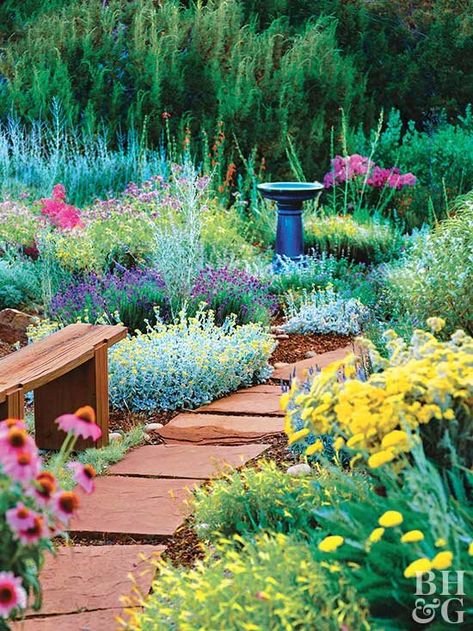
Birds, butterflies, and pollinators add life and movement, especially when the garden itself feels still.
- Spring and summer: Plant nectar-rich flowers like bee balm, coneflowers, and salvias.
- Fall: Berry-bearing shrubs like viburnum and pyracantha provide food for migrating birds.
- Winter: Evergreens offer shelter, and seed heads from grasses or black-eyed Susans feed wildlife.
Designing with wildlife in mind brings energy and rhythm to your garden, making it engaging year-round.
8. Use Color Palettes That Transition Well
Choose a color scheme that naturally evolves with the seasons. For example:
- Spring: Soft pastels—pinks, purples, and whites.
- Summer: Bold, warm tones like reds, oranges, and yellows.
- Fall: Deep jewel tones and golden hues.
- Winter: Neutral greens, silvers, and pops of red from berries.
A thoughtful palette ensures harmony as your garden changes over time.
9. Plan for Maintenance Across the Year
Even the most beautiful garden loses its appeal if it’s overgrown or neglected. Plan maintenance into your design.
- Spring: Clean up debris, prune shrubs, and refresh soil.
- Summer: Deadhead flowers, water deeply, and mulch to retain moisture.
- Fall: Divide perennials, plant bulbs, and add compost.
- Winter: Protect tender plants, prune trees, and plan for the next year.
Designing with maintenance in mind ensures your garden stays healthy and beautiful.
10. Personalize Your Space
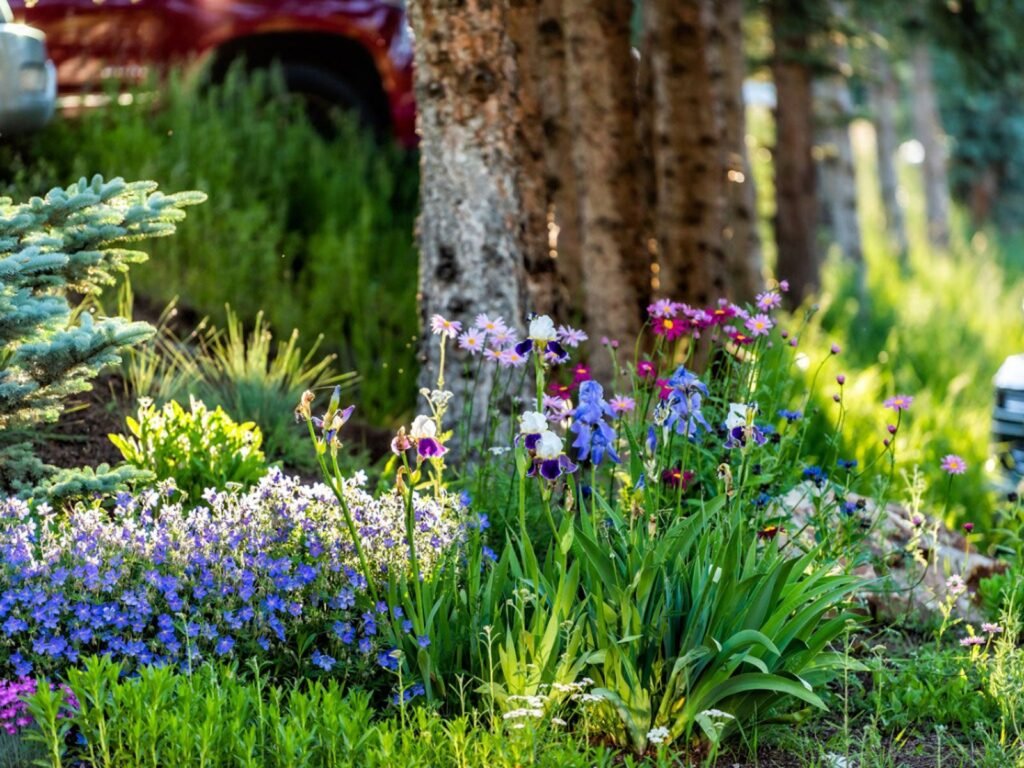
A year-round garden should reflect your personality. Add unique touches—wind chimes, art pieces, handmade trellises, or themed plantings. These elements keep your garden special in every season.
Final Thoughts
Designing a garden that looks great in every season is about balance: evergreen structure, seasonal blooms, varied textures, and thoughtful details. By layering plants, staggering bloom times, and incorporating hardscape features, your garden can transform gracefully through spring’s freshness, summer’s abundance, fall’s fiery colors, and winter’s quiet beauty.
A well-designed four-season garden doesn’t just look beautiful—it also feels alive, dynamic, and engaging all year long. Whether you’re starting fresh or improving an existing space, these strategies will help you create a garden that delights in every season.
Would you like me to create a sample four-season planting plan (with plant suggestions for spring, summer, fall, and winter) that readers can use as a blueprint?
